All about the Autobahn
Germany Autobahn Everything You Need To Know
Autobahn is the German word for a controlled-access highway or motorway in Germany, which also known as Bundesautobahn literally translates to “Federal Automobile Track”. It is the best highway in the entire world, which much of speed system has no limit, Nevertheless, the limit systems are posted and implemented in regions that are developed, on non-speed-restricted distances, the advisory speed limit (Richtgeschwindigkeit) of 130 Kilometers per hour (81 mph) applies.
The History of the German Autobahn
Autobahn is the German word for a controlled-access highway or motorway in Germany, which also known as Bundesautobahn literally translates to “Federal Automobile Track”. It is the best highway in the entire world, which much of speed system has no limit, Nevertheless, the limit systems are posted and implemented in regions that are developed, on non-speed-restricted distances, the advisory speed limit (Richtgeschwindigkeit) of 130 Kilometers per hour (81 mph) applies. During the 1930s, when the development of the system commenced, it was officially called Reichsautobahn. There are several other controlled-access roads at the federal (Bundesstraße), state (Landesstraße), district, and local levels, but these are not included in the Autobahn network and are formally designated as Kraftfahrstraße.
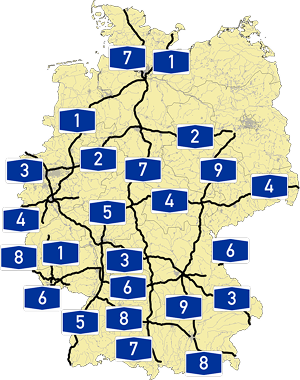
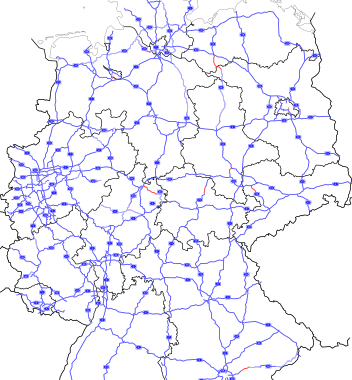
The length of the Autobahn
As of 2021, Germany’s autobahn system spans approximately 13,192 kilometers (8,197 miles) and features a motorway density of 36 kilometers per 1,000 square kilometers (Eurostat), making it one of the most extensive and dense controlled-access networks worldwide. Within the European Union, it ranked fifth in density in 2016, following countries like the Netherlands (66 kilometers) and Finland (3 kilometers). While larger highway networks exist in countries such as the United States (77,960 kilometers or 48,440 miles) and China (149,600 kilometers or 93,000 miles), both nations are nearly 30 times larger in land area than Germany, highlighting the autobahn’s exceptional density.
Where is the Autobahn? Key Routes & Entry Points
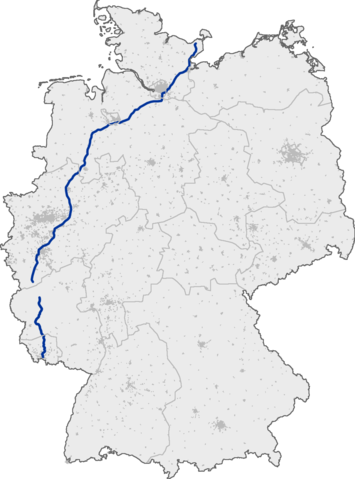
Autobahn A1 (BAB 1)
The Autobahn A1 (BAB 1) is one of Germany’s longest highways, stretching 730 km from Lübeck to Saarbrücken. It connects major cities like Hamburg, Bremen, Dortmund, and Cologne, serving as a key transport route for both freight and passengers. Known for its scenic landscapes through Münsterland and the Eifel, the A1 offers high-speed sections but also experiences heavy traffic and roadworks near urban areas. As a vital part of Germany’s Autobahn network, it plays a crucial role in national and international travel.
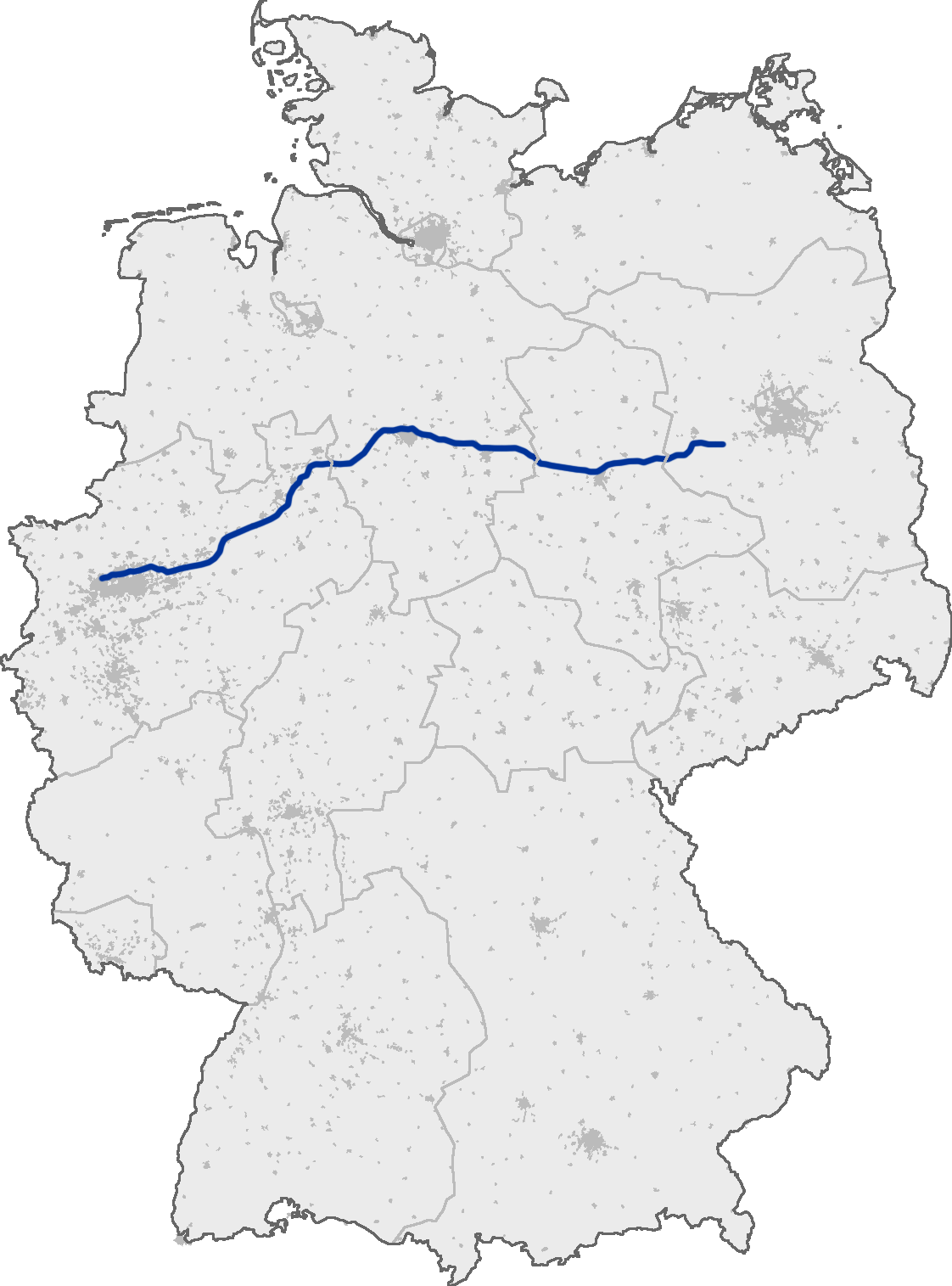
Autobahn A2 (BAB 2)
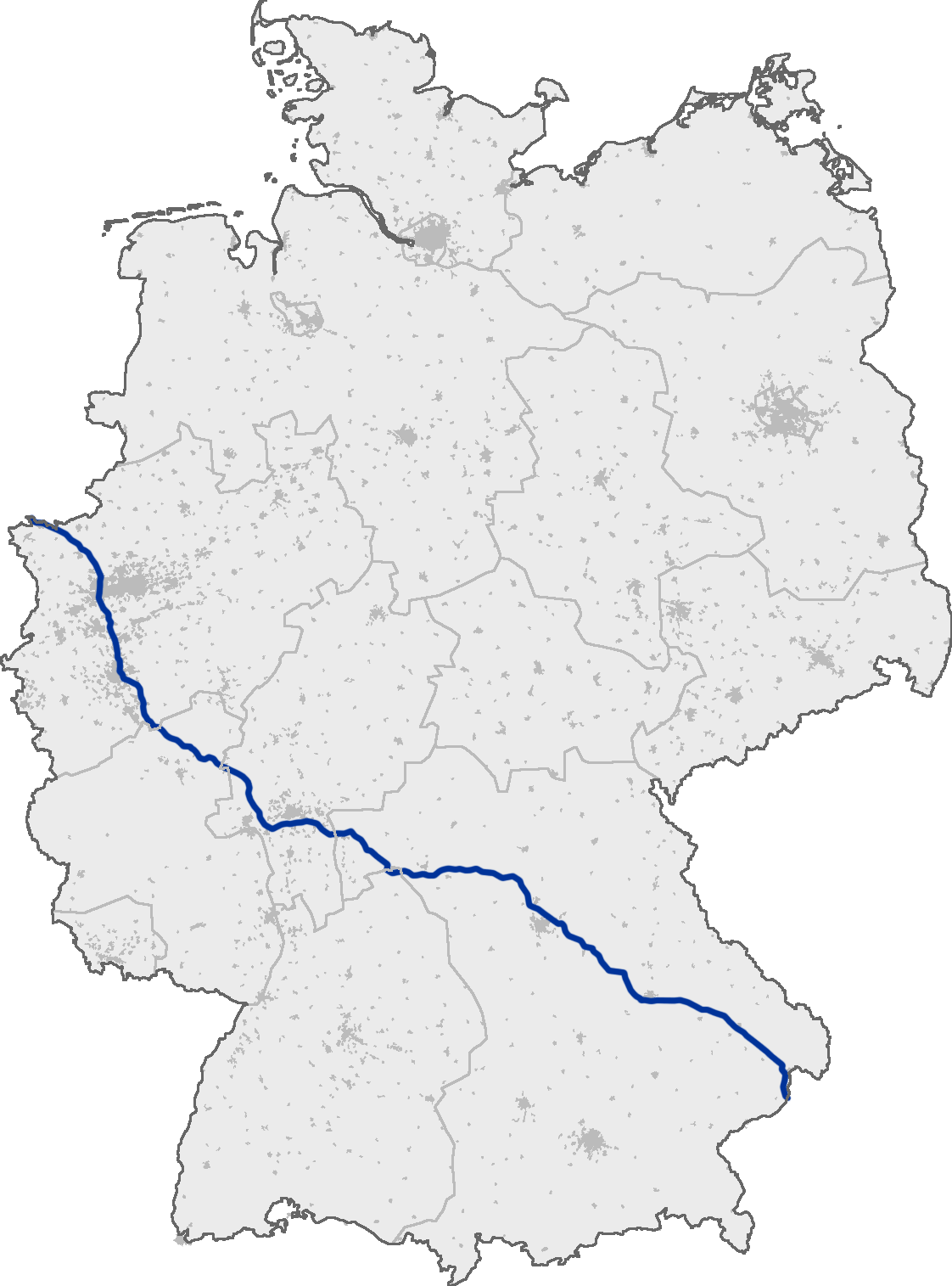
Autobahn A3 (BAB 3)
The Autobahn A3 (BAB 3) is a key north-south route in Germany, stretching 778 km from the Dutch border near Arnhem to the Austrian border at Passau. It passes through major cities like Düsseldorf, Cologne, Frankfurt, Nuremberg, and Regensburg, making it one of the busiest highways for both domestic and international traffic. Known for its diverse landscapes and high-speed sections, the A3 is essential for trade, tourism, and daily commuting, though congestion is common near metropolitan areas.
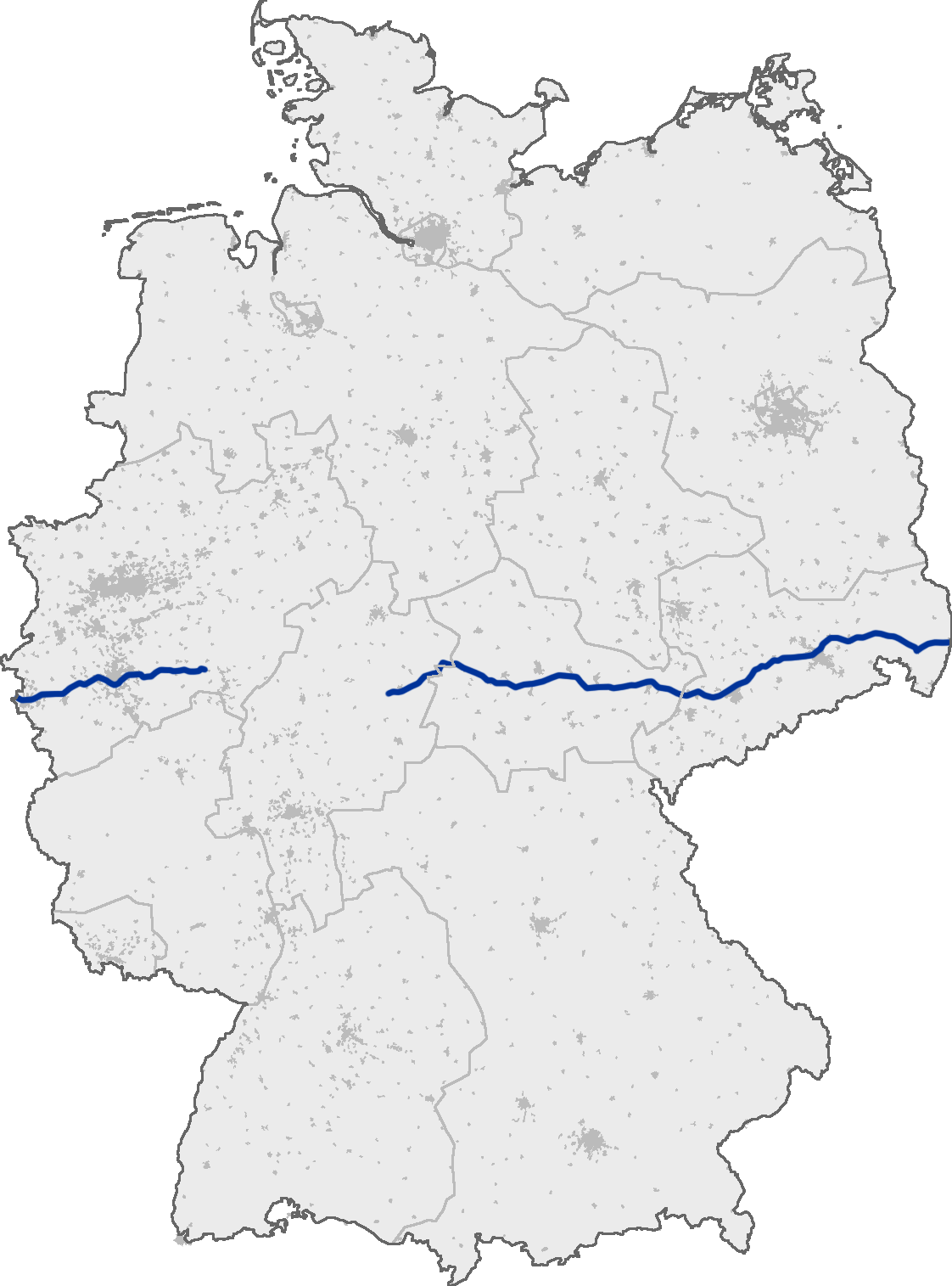
Autobahn A4 (BAB 4)
The Autobahn A4 (BAB 4) runs from the Dutch border near Aachen to the Polish border at Görlitz, covering over 600 km. It connects key cities like Cologne, Erfurt, Dresden, and Chemnitz, serving as an important east-west transit route in Germany. The A4 features scenic stretches through Thuringia and Saxony, but also experiences heavy truck traffic, especially near logistics hubs. As a vital link between Western and Eastern Europe, it plays a crucial role in trade and long-distance travel.
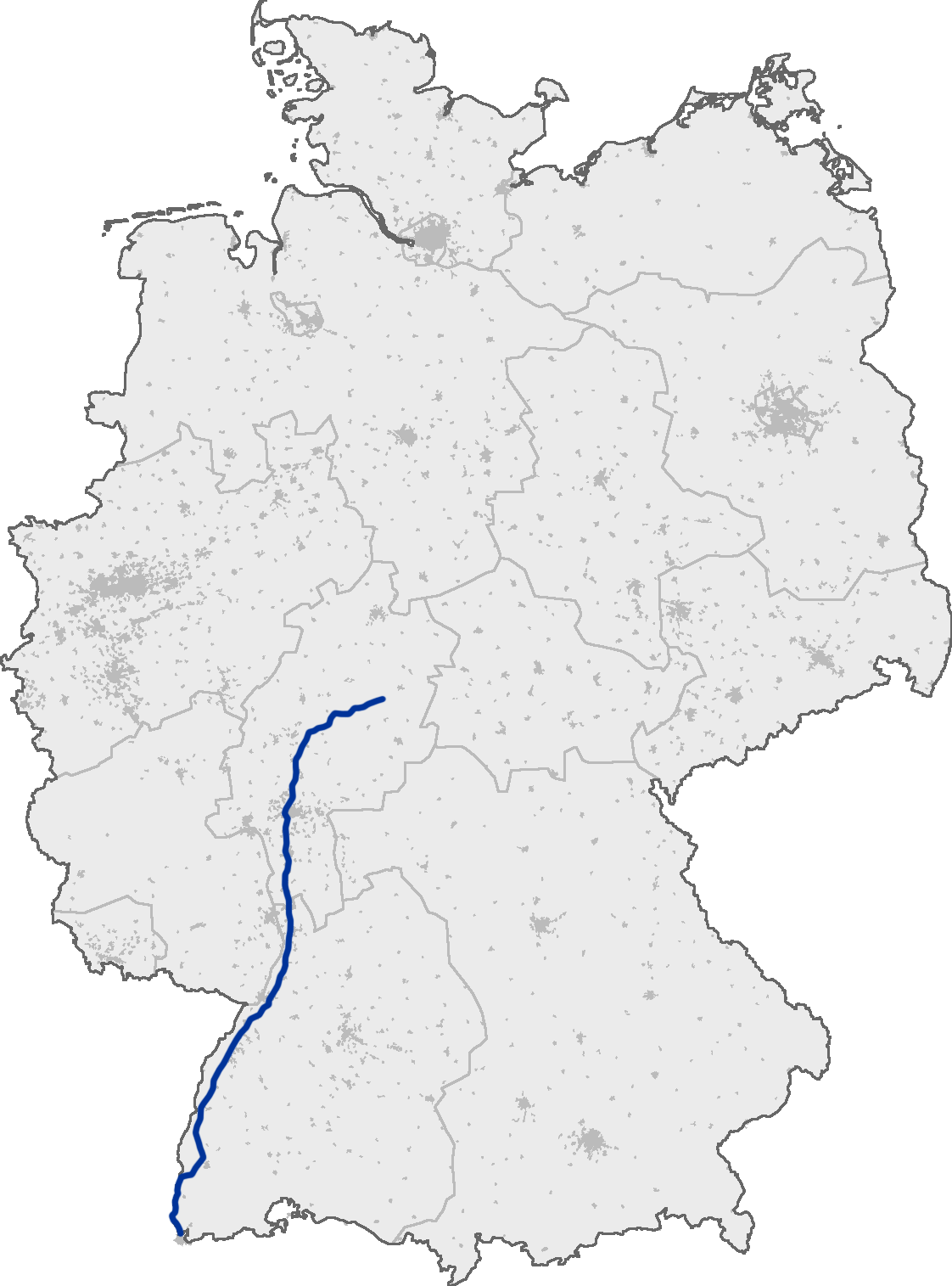
Autobahn A5 (BAB 5)
The Autobahn A5 (BAB 5) is a major north-south route in Germany, stretching over 440 km from the Frankfurt area to the Swiss border at Basel. It passes through key cities like Karlsruhe and Freiburg, serving as a crucial corridor for international trade and travel. Known for its long, straight sections, the A5 includes unrestricted speed zones, making it popular among enthusiasts. However, heavy commuter and truck traffic can lead to congestion, especially near Frankfurt.
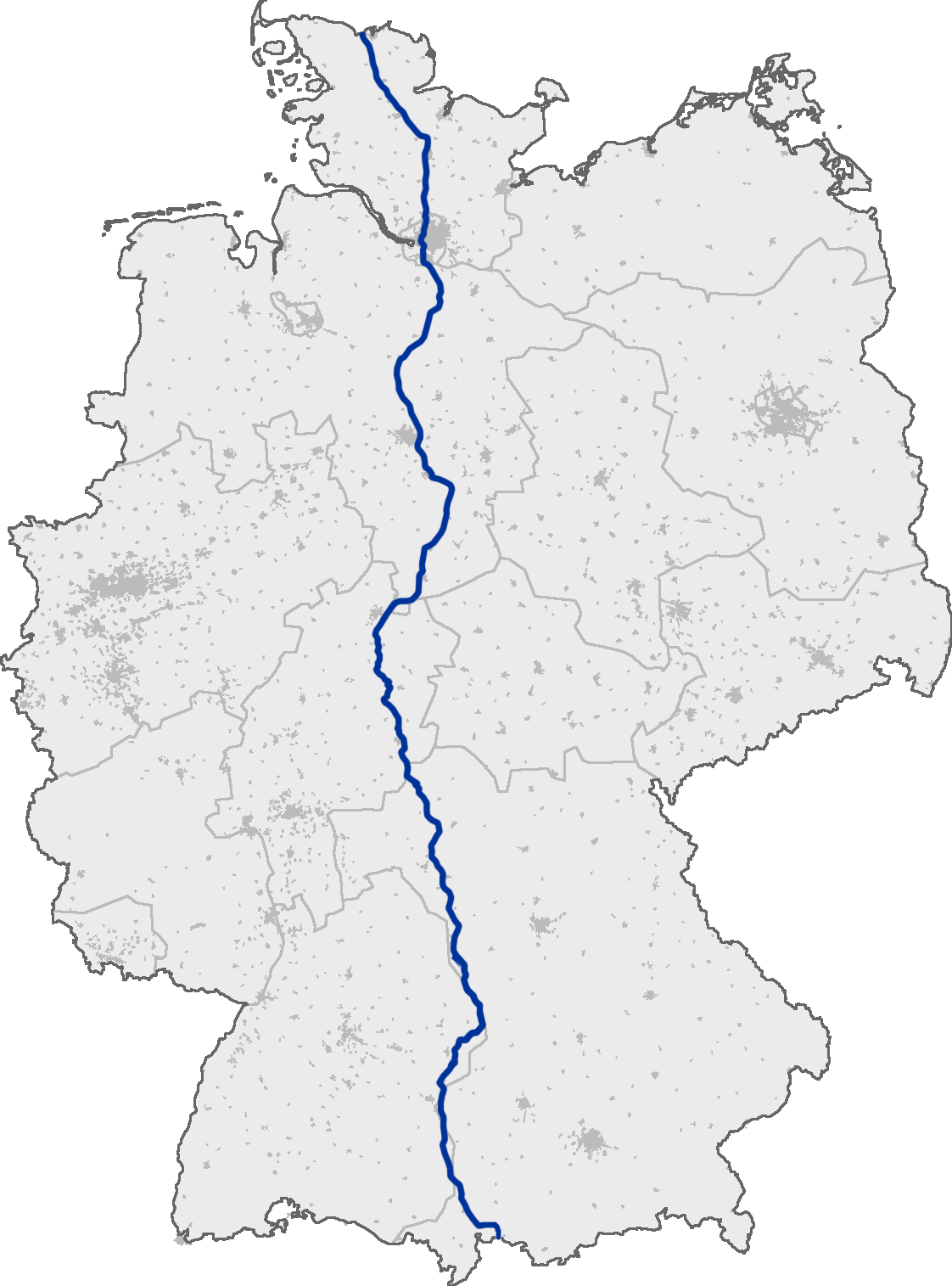
Autobahn A7 (BAB 7)
Autobahn Driving Rules
The German Autobahn is famous for sections with no speed limits, but that doesn’t mean it’s a free-for-all. Driving safely on these high-speed highways requires knowing and respecting some essential rules and etiquette. Following these guidelines not only keeps you safe but also helps maintain the Autobahn’s efficient and unique driving environment.
If you experience car trouble, pull over to the emergency lane and place your warning triangle about 100 meters behind your vehicle. Emergency phones are located every 2 km along the Autobahn, and the Rettungsgasse (emergency corridor) must be kept clear during traffic jams to allow emergency vehicles to pass.
Certain areas, particularly near cities, construction zones, or busy intersections, may have specific speed limits. These limits are mandatory, and ignoring them can result in fines. Look for digital signs that indicate temporary speed restrictions due to traffic conditions or weather.
The faster you drive, the more space you need to stop safely. A good rule of thumb is to keep at least half your speed in meters between you and the car ahead (e.g., if driving at 120 km/h, leave a 60-meter gap).
Our Premium Fleet for the Autobahn Experience
Some automobile enthusiasts visiting Germany might feel let down when they encounter the Autobahn for the first time. Compared to Miami’s wide and crowded ten-lane roadways, the Autobahn may initially seem less congested. However, it is exhilarating to discover that a significant portion of Germany’s Autobahn has no speed limits.
You may have never thought about the chance to drive on Germany’s Autobahn in a supercar. Known as the road with virtually no speed limit signs, the Autobahn offers an unparalleled driving experience for those seeking luxury and thrill. Utilizing supercars from various manufacturers will elevate your adventure, ensuring you will always remember the experiences provided by Ferrari, Lamborghini, McLaren, and Porsche.

Ferrari F8 Tributo
Engine
3.9L V8 Twin-Turbo
Power
710 bhp
Acceleration
(0-100 km/h): 2.9 seconds
Top Speed
340 km/h (211 mph)

Lamborghini Huracan
Engine
5.2L Naturally Aspirated V10
Power
640 bhp
Acceleration
0 to 100 km/h in 3.1s
Top Speed
325 km/h
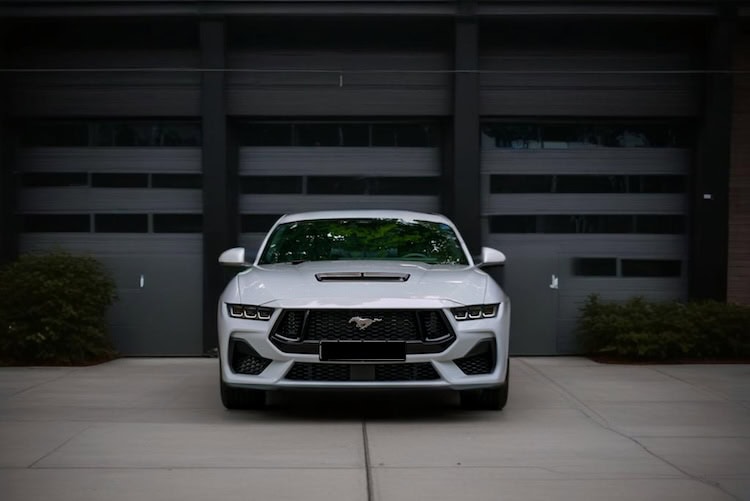
Ford Mustang
Engine
5.0L Naturally Aspirated V8
Power
486 bhp
Acceleration
0 to 100 km/h in 4.2s
Top Speed
250 km/h

Porsche 992 Carrera GTS
Engine
3.0L Twin-Turbo Flat-6
Power
473 bhp
Acceleration
0 to 100 km/h in 3.4s
Top Speed
311 km/h




